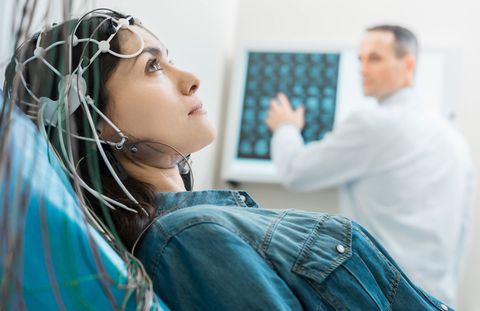Richlands ProAesthetics, MedSpa, and Cosmetology
Providing Aesthetic Services Since 2009
Providing Medical Services Since 1994
Call Us Today!
Neurology Testing
WHAT IS EMG AND NERVE CONDUCTION STUDY?
When your muscles are sore or weak and you don’t know why, there are a couple of tests that can help give you answers. One is EMG electromyography. The other is Nerve Conduction Study (NCS). They are often done at the same time.
Do you need EMG or NCS?
It's natural to have soreness or numbness in a muscle once in a while; you might strain wrist muscle lifting something heavy, for example.
For many people, though, a sore wrist is caused by an injured nerve, not an injured muscle. When it's not clear why you're having problems with your wrist, back, legs, or other body part, one or both of these tests may be helpful.
The tests may be given to people who have the following symptoms that don't go away:
- Pain or cramping
- Tingling or numbness
- Muscle weakness
Your doctor can use the results of these tests to figure out whether you have a muscular problem or a nerve problem.
What is EMG?
Your muscles move when nerve signals from the brain tell them to get to work. Electromyography measures how well your muscles respond to those signals. If the test picks up a problem, you may be diagnosed with what is called a neuromuscular disorder.
What is NCS?
Nerve signals are electrical impulses that travel quickly throughout your nervous system. Sometimes, problems with the electrical activity in your nerves can cause pain, tingling, or weakness in your muscles.
NCS measures how fast and how strong the electrical activity is in a nerve. The test can tell whether a nerve has been damaged.
What does the test reveal?
Both tests can help doctors diagnose what's wrong with you. They can also help rule out conditions that you don’t have. EMG and NCS are helpful in diagnosing:
- Neuromuscular diseases, such as muscular dystrophy
- Nerve problems in the spine, such as herniated disc
- Nerve problems elsewhere in the body, such as carpal tunnel syndrome
- Peripheral nerve problems in your arms or legs
- Pinched nerves
- Guillain-Barre syndrome, a disease in which your immune system attacks the nerves in your legs and arms
- NCS can also help your doctor see how well you're recovering from a nerve injury.
Contact Information
Phone: 571-577-6300
Fax: 571-444-4014
Email: info@chcproaesthetics.com
Address: 957 2nd St, Richlands VA 24641
Payment Options:






Care Credit
Member of American Association of Physicians
Business Hours
Monday 9:00 am - 5:00 pm
Tuesday 9:00 am - 5:00 pm
Wednesday 9:00 am - 5:00 pm
Thursday 9:00 am - 5:00 pm
Friday 9:00 am - 5:00 pm
Saturday and after hours consultations
are by Appointment Only
Contact Information
Phone: 571-577-6300
Fax: 571-444-4014
Email: info@chcproaesthetics.com
Address: 25055 Riding Plaza, Unit 130, Chantilly, VA 20152
Payment Options:






Care Credit
Member of American Association of Physicians
Business Hours
- Monday
- -
- Tuesday
- -
- Wednesday
- -
- Thursday
- -
- Friday
- -
- Saturday
- Appointment Only
- Sunday
- Closed
Content, including images, displayed on this website is protected by copyright laws. Downloading, republication, retransmission or reproduction of content on this website is strictly prohibited. Terms of Use
| Privacy Policy

